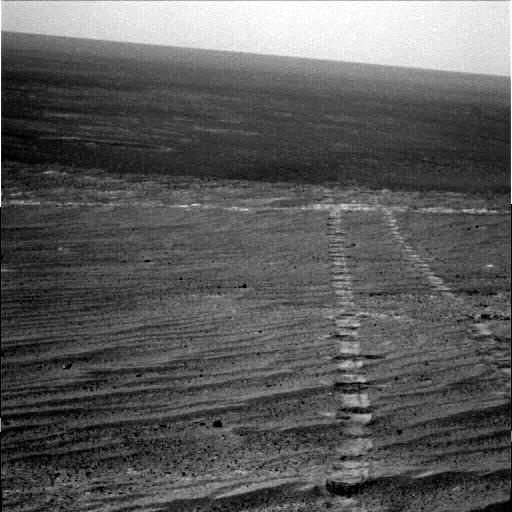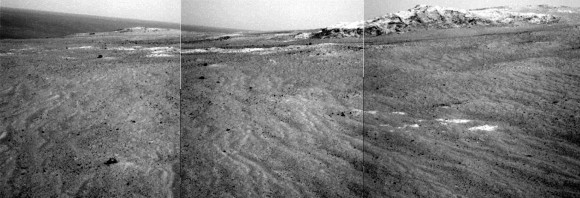December 31, 2014 – The last day of the current year sees Opportunity facing an increasing series of amnesia events. So NASA has decided to isolate bad memory on the aging robot to keep the mission going.
Opportunity uses flash and RAM memory. The flash memory stores information relayed from Earth as well as data that the rover collects as it rolls along. But over a decade that flash memory, divided into seven banks, has been overwritten so often that it is beginning to fail. The problem has been isolated to the seventh bank.
Keeping a ten-year old rover operational is an amazing feat of technical skill. The engineers have been using the RAM memory which is temporary to send instructions every few days to the rover. But each time the rover’s memory freezes, it has to reboot and that means the instructions in RAM get wiped out. So now the team on Earth is prepping to do a partial lobotomy on the rover’s seventh flash memory bank. Talk about a long distance operation. But it will be worth it if they succeed because Opportunity should then be ready to continue the mission.
Why is that so important considering the Curiosity rover is going full tilt in the Gale Crater? Because Opportunity is in a different location and continues to make interesting discoveries. Some of the past ones include:
- Observing Martian dust devils.
- Detecting argon gas in the atmosphere.
- Capturing images of frost formation on the planet’s surface.
- Finding past and present evidence of water.
- Discovering evidence of past hydrothermal activity.
- Observing ripples and dune formations pushed by Martian winds.
- Finding meteorites lying in plain sight on the planet’s surface.
- Finding deposit formations that could only have occurred at the bottom of surface lakes.
- Discovering the ancient Mars of 4 billion years ago had surface conditions amenable to the type of life found on Earth.
And now the engineers want Opportunity to keep going because a little more than 650 meters (approximately 2,100 feet) from where it is at present is an exciting area on the planet surface that NASA has called Marathon Valley. This valley contains clay deposits which may date back 3.5 billion years.
At its present speed when in motion of 3.75 centimeters (approximately 1.48 inches) per second the rover if continually on the go could reach Marathon Valley in approximately 12 Earth days. But Opportunity will make course corrections as well as find things along the way to distract it and its Earth operators, so I suspect it is probably going to be a month or more before it reaches its next milestone location. With the Martian winter approaching Opportunity will have to find a good place to lay over ensuring it maintains a good angle to the Sun for collecting energy through its solar array.
The composite image taken on Sol 3,861 (December 2014) courtesy of NASA, the Jet Propulsion Laboratory at Caltech, Cornell and Arizona State Universities shows you what lies ahead for the little rover whose 90-day original mission has exceeded the distance of a marathon over a decade, a remarkable achievement.
Postscript at the end of 2014
I want to thank all of my faithful readers who continue to make the writing of this blog a fulfilling task. I don’t do this for money. I do this because I remain going into my 66th year of life relentlessly curious about life and this amazing Universe. We humans are privileged riding on our “pale blue dot” in the midst of a vast ocean of space. Let’s hope that in 2015 we become better stewards of its largesse. To all of you who keep coming back here, a healthy, safe and prosperous New Year.












